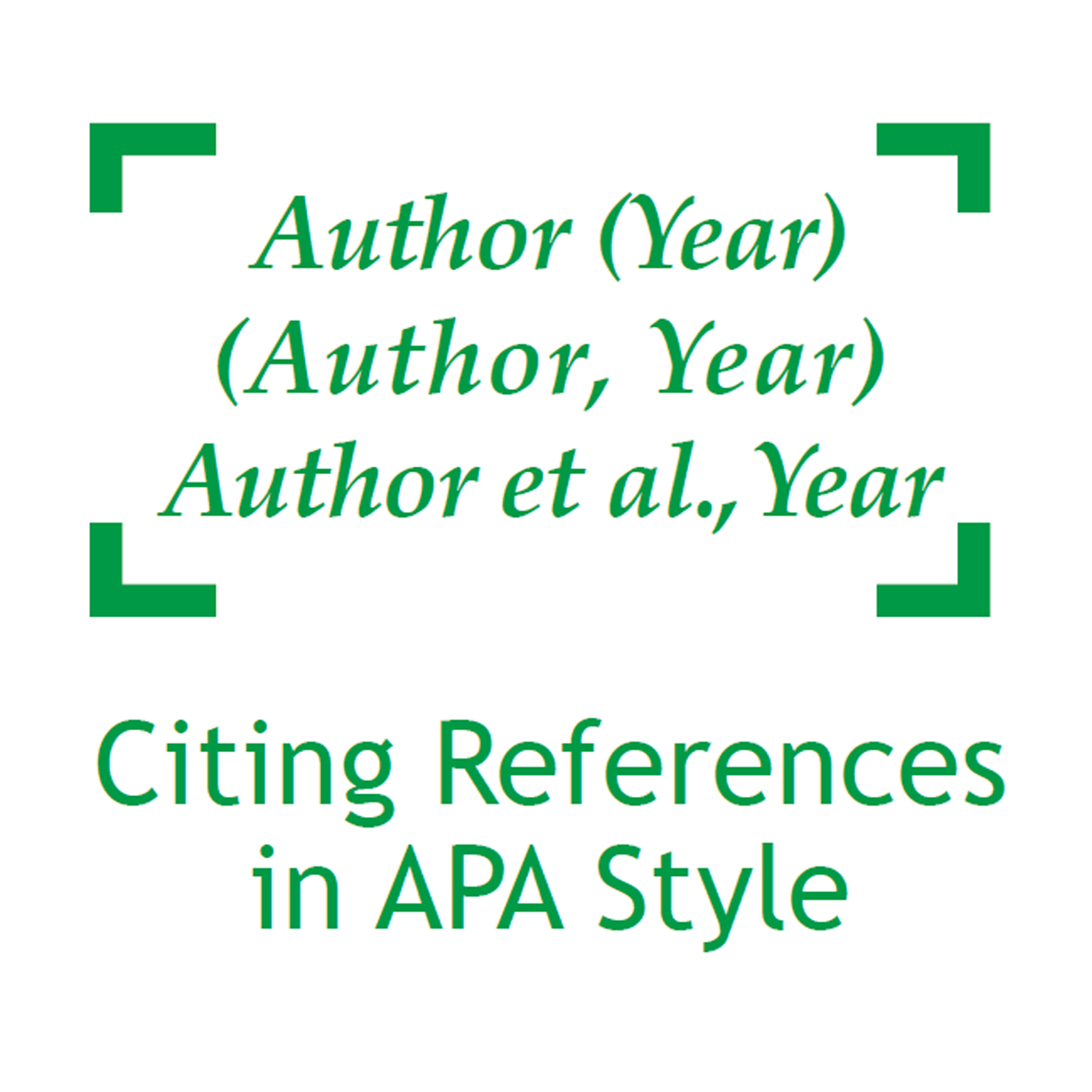Citing References
In your research paper, whenever you refer to prior research or to ideas that were generated by others, you should cite the source or sources in the text and in a References section at the end of the paper. In the psychological sciences, typically references are cited using APA style (as specified by the Publication Manual of the American Psychological Association).
For related information, please see the Formatting Research Papers and Academic Integrity and Avoiding Plagiarism sections of this website.
Citing References in APA Style
The Publication Manual of the American Psychological Association has detailed guidelines for the citing of different sources within the text (in-text citations) and in the References section. On this page we detail general guidelines and common cases of citing sources in APA style.
Please note that the following is an overview; for more in-depth information, referring to the Manual is recommended. Please also note that required reference styles and the specifics of citing references may vary across courses. You should check with your instructor for any special referencing requirements.
In-Text Citations in APA Style
In APA style, references are cited in the text using the last name of the author(s) and the publication date. For example, if you are citing an article written by John Wixted in 2004, the in-text citation would typically be enclosed in parentheses as “(Wixted, 2004)”. For example:
Research in the fields of psychology and neuroscience provides support for the theory that forgetting often stems from retroactive interference (Wixted, 2004).
Alternatively, if you are referring directly to the name of the author in the text, then the name is followed by the year of publication. The year of publication is enclosed in parentheses. For example:
Wixted (2004) reviewed psychology and neuroscience research that provides support for the theory that forgetting often stems from retroactive interference.
If the reference has between two to five authors, then the last names of all authors are listed as part of the first in-text citation of that reference in the article. For example:
Taking practice tests has been shown to boost 8th grade students’ memory of U.S. history facts, relative to a restudy control condition, on a final test administered 16 weeks later (Carpenter, Pashler, & Cepeda, 2009).
After that initial in-text citation, all subsequent in-text citations for that reference only list the last name of the first author followed by et al. For example:
The relative benefits of practice testing over restudy were larger on the final test administered 16 weeks later than on a final test administered 1 week later (Carpenter et al., 2009).
If the reference has more than five authors, the last name of the first author, followed by et al., is used for all in-text citations.
These examples represent among the most common cases of in-text citations; for further examples you might wish to consult the official APA Style website and the Purdue University Online Writing Lab’s guide to in-text citations in APA style.
Reference Lists in APA Style
In APA style, each peer-reviewed article is listed in a References section towards the end of the research paper. Each reference of a journal article names the author(s), publication date, article title, name of journal, volume, and page number. For example (note that hanging indents are not shown):
Wixted, J. T. (2004). The psychology and neuroscience of forgetting. Annual Review of Psychology, 55, 235-269.
Similarly, each reference of a book names the author(s), the editor(s) if applicable, book title, page numbers (if applicable), as well as publisher name and location. For example (note that hanging indents are not shown):
Healy, A. F., Wohldmann, E. L., & Bourne, L. E., Jr. (2005). The procedural reinstatement principle: Studies on training, retention, and transfer. In A. F. Healy (Ed.), Experimental cognitive psychology and its applications; experimental cognitive psychology and its applications (pp. 59-71). Washington, DC: American Psychological Association.
As with in-text citations, the above examples represent two common cases of including a source in a Reference list; there are many other cases. For further details on creating the References section, please see the Formatting Research Papers section of this website. You may also wish to consult the official APA Style website and the Purdue University Online Writing Lab’s guide to the References list in APA style.
Workshops and Downloadable Resources
Workshops
- For in-person discussion of the process of writing research papers, please consider attending this department’s “Writing Research Papers” workshop (for dates and times, please check the undergraduate workshops calendar).
Downloads
- How to Write APA Style Research Papers (a comprehensive guide) [PDF]
- Tips for Writing APA Style Research Papers (a brief summary) [PDF]
Further Resources
How-To Videos
Databases and Search Engines (some may require connection to UCSD network)
UCSD Resources on Finding and Evaluating Sources
External Resources
Back to top
